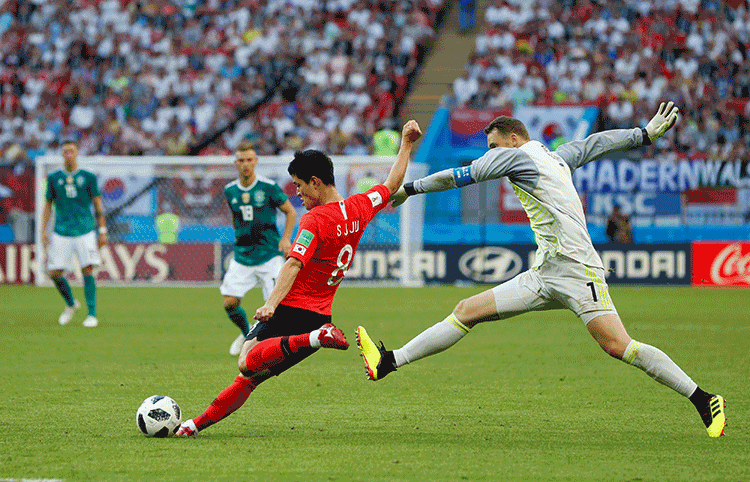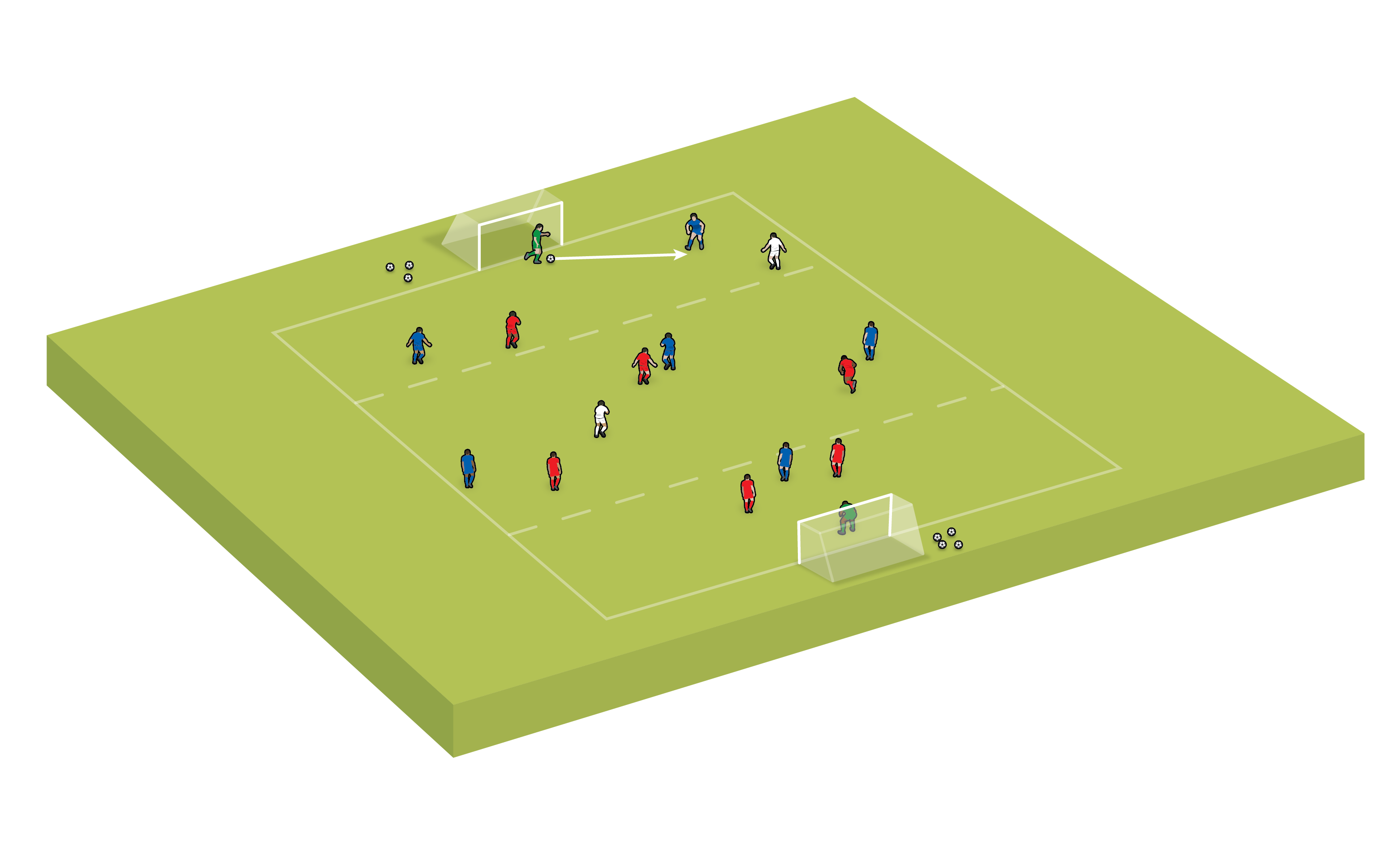Defend against long ball teams
Coaching Adviceby Dave Clarke
When faced with the threat of the long ball, your defenders need to be well drilled to cope and your attackers need to press high to deal with the danger at source.
When faced with the threat of the long ball, your defenders need to be well drilled to cope and your attackers need to press high to deal with the danger at source.
The long ball, or ball over the top, is spoken of in derisive terms today – a stick used to beat teams for lack of subtlety and variation.
The long ball, or ball over the top, is spoken of in derisive terms today – a stick used to beat teams for lack of subtlety and variation.
At grassroots level it is more common and where coaches have less time to coach their back four it can be a real thorn. It takes discipline, organisation and concentration to counter the threat of the long ball – but with your back four well drilled, the tactic rapidly loses its effect.
The solution to countering the long ball begins with your own attackers and this is the theme of the first drill. Most long balls are launched from deep, bypassing the midfield completely, and your forward line must be reminded they have a defensive role, too.
Your forwards need to close down those missiles and stop them at source. This means engaging high up the pitch, getting on top of opponents before they can size up a target, and then force them to lay the ball off, charge it down, or best of all dispossess the player. Dropping off deep only encourages those balls to be aimed with more and more precision from closer and closer to your six-yard box. There, one touch, or even a deflection, can result in a goal.
The solution to countering the long ball begins with your own attackers and this is the theme of the first drill. Most long balls are launched from deep, bypassing the midfield completely, and your forward line must be reminded they have a defensive role, too.
Your forwards need to close down those missiles and stop them at source. This means engaging high up the pitch, getting on top of opponents before they can size up a target, and then force them to lay the ball off, charge it down, or best of all dispossess the player. Dropping off deep only encourages those balls to be aimed with more and more precision from closer and closer to your six-yard box. There, one touch, or even a deflection, can result in a goal.
Your defenders must concentrate hard and read the game, playing on the half-turn and not losing sight of runners off their shoulder. A disciplined defence will also work hard to keep a tight line and play the offside. Former Arsenal manager Arsene Wenger maintains “the long pass is predictable, you have to be mentally strong enough and technically coordinated to play them offside”.
If the opposition are still able to launch the ball into your penalty area, your team need to drop a little deeper and work as a unit as the second drill demonstrates. One player, the best aerial defender, needs to challenge the striker, with the rest ready to pounce on the second ball if it drops in a danger zone.
With the two sessions below your teams will soon be coping with the long ball.
Long balls are difficult to defend against unless you get your players following these handy tips…
> Attackers should press high up the pitch to put pressure on players looking to launch the ball long
> Organise the centre of defence to clear aerial attacks
> Force opposition wingers inside to stop them crossing the ball
> Fullbacks and wingers should double up on wide players
> The midfield should battle hard to prevent flick-ons
Badlands
Cover your back
If the opposition are still able to launch the ball into your penalty area, your team need to drop a little deeper and work as a unit as the second drill demonstrates. One player, the best aerial defender, needs to challenge the striker, with the rest ready to pounce on the second ball if it drops in a danger zone.
With the two sessions below your teams will soon be coping with the long ball.
TOP TIPS FOR DEFENDING THE LONG BALL
Long balls are difficult to defend against unless you get your players following these handy tips…
> Attackers should press high up the pitch to put pressure on players looking to launch the ball long
> Organise the centre of defence to clear aerial attacks
> Force opposition wingers inside to stop them crossing the ball
> Fullbacks and wingers should double up on wide players
> The midfield should battle hard to prevent flick-ons
Badlands
Cover your back
Newsletter Sign Up
Coaches Testimonials

Gerald Kearney, Downtown Las Vegas Soccer Club

Paul Butler, Florida, USA

Rick Shields, Springboro, USA

Tony Green, Pierrefonds Titans, Quebec, Canada
Subscribe Today
Discover the simple way to become a more effective, more successful soccer coach
In a recent survey 89% of subscribers said Soccer Coach Weekly makes them more confident, 91% said Soccer Coach Weekly makes them a more effective coach and 93% said Soccer Coach Weekly makes them more inspired.
*includes 3 coaching manuals
Get Weekly Inspiration
All the latest techniques and approaches
Soccer Coach Weekly offers proven and easy to use soccer drills, coaching sessions, practice plans, small-sided games, warm-ups, training tips and advice.
We've been at the cutting edge of soccer coaching since we launched in 2007, creating resources for the grassroots youth coach, following best practice from around the world and insights from the professional game.








